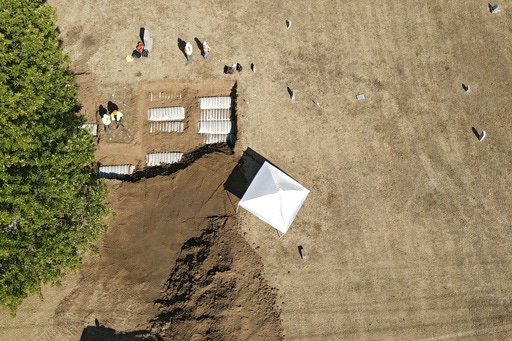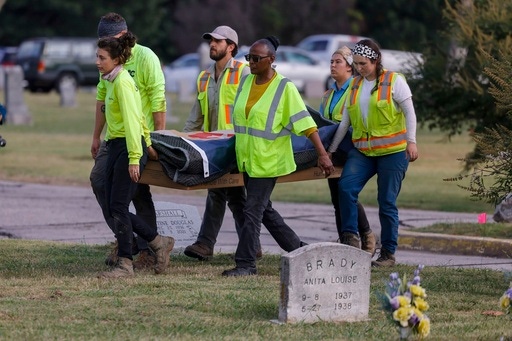A World War I veteran is the first victim of the Tulsa Race Massacre to be identified from mass graves

OKLAHOMA CITY (AP) — A World War I veteran is the first person identified from the graves containing more than 100 victims of the 1921 Tulsa race massacre that devastated the city’s black community, the mayor said Friday.
Using DNA from descendants of his brothers, the remains of CL Daniel of Georgia were identified by Intermountain Forensics, Mayor GT Bynum and lab staff said. He was in his 20s when he was killed.
“This is a family that can give a lost family member a proper burial after not knowing where he or she was for over a century,” Bynum said.
In 1921, a white mob massacred as many as 300 black people over the course of two days. This long-covered outbreak of racist violence destroyed a thriving community known as Black Wall Street and ended with the forced confinement of thousands of black residents to internment camps overseen by the National Guard.
Brenda Nails-Alford, a descendant of massacre survivors and a member of the committee overseeing the search for the victims, said the identification moved her to tears.
“This is a great day, a day that has taken forever to come to fruition,” Nails-Alford said.
During the searches that began in 2020, more than 120 graves were found. Forensic analyses and DNA samples were taken from about 30 of the remains. Daniel’s remains are the first from these graves that can be directly linked to the massacre.
The breakthrough in identifying Daniel came when investigators found a 1936 letter from his mother’s lawyer requesting veterans benefits. Alison Wilde, a forensic scientist at Intermountain Forensics in Salt Lake City, said the letter, provided by the National Archives, convinced investigators that Daniel was killed in the massacre.
No member of Daniel’s family attended the press conference announcing the identification earlier this week; many of them do not know each other at all, Wilde said.
“I think this is shocking news, to say the least” for the family, Wilde said. “We know we’ve brought a lot into her life.”
The massacre began when a white mob, including some officials, looted and burned Tulsa’s Greenwood District. From May 31 to June 1, more than 1,200 homes, businesses, schools and churches were destroyed.
Forensic anthropologist Phoebe Stubblefield said Daniel’s remains were fragmented and the cause of death could not be determined.
“We didn’t see any signs of gunshot wounds, but if the bullet didn’t hit a bone or lodge in the body, how are we supposed to recognize it?”
Oklahoma State Archaeologist Kary Stackelbeck said the exhumed remains, including Daniel’s, were found in simple wooden boxes – and Daniel’s boxes were too small for him.
“They had to bend his legs a little at the knee to get him in,” Stackelbeck said. “His head and feet were touching both ends of the coffin.”
Stackelbeck said investigators were looking for plain coffins because newspaper articles, death certificates and funeral home records of the time described them as the type used to bury massacre victims.
Bynum said the next search for victims will begin on July 22.
“We will continue the search until we find everyone we can,” Bynum said.
A lawsuit filed by two known survivors of the massacre was dismissed by the Oklahoma Supreme Court in June.
The lawyers for the two, Viola Fletcher (110) and Lessie Benningfield Randle (109), are asking the court to reconsider the decision. The lawyers are also calling on the US Department of Justice to launch an investigation into the massacre under the Emmett Till Unsolved Civil Rights Crime Act of 2007, which allows the reopening of unsolved cases of violent crimes against blacks committed before 1970.
Copyright 2024 The Associated Press. All rights reserved. This material may not be published, broadcast, rewritten or redistributed without permission.



